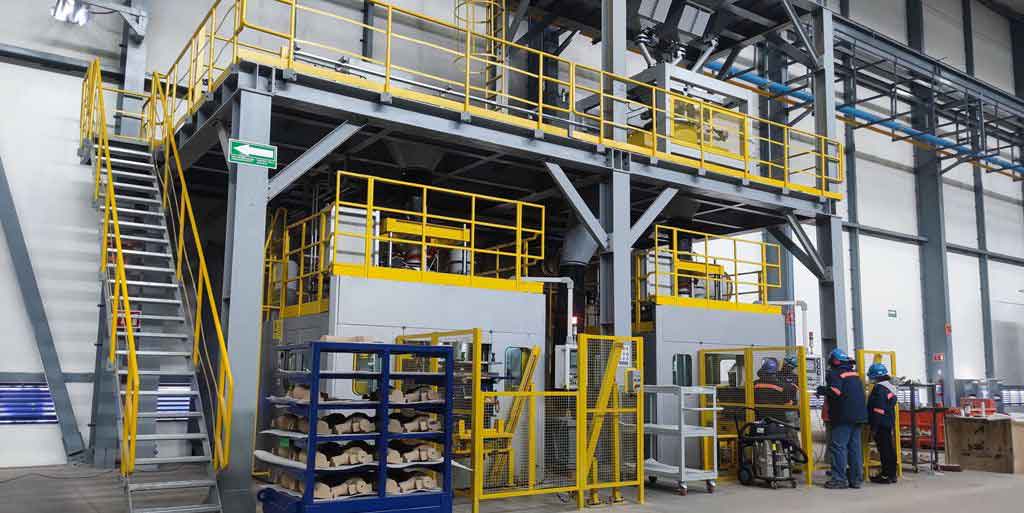China’s steel casting industry has achieved global recognition for its large-scale production and diverse product portfolio of wear-resistant materials. With an annual demand exceeding 5 million tons, wear-resistant steel castings play a vital role in heavy industries such as mining, cement production, and power generation. This article systematically examines the classification, manufacturing processes, standards, and evolving trends of wear-resistant steel castings.
1. Classification of Wear-Resistant Steel Castings
Wear-resistant steels are primarily categorized into austenitic manganese steels and non-manganese alloy steels. Their chemical compositions and mechanical properties can be summarized as follows:
| Category | Typical Grades | Chemical Composition (wt%) | Hardness (HRC) | Impact Energy (J) |
|---|---|---|---|---|
| High Mn Steel | ZGMn13 | C: 1.05–1.40, Mn: 11–14 | 18–22 (Initial) 50–56 (Work-hardened) |
≥118 |
| Medium Mn Steel | Mn7Cr2 | C: 1.05–1.25, Mn: 6–9, Cr: 1.5–2.5 | 25–32 | 60–80 |
| Low-Alloy Steel | ZG30Cr5Mo | C: 0.30–0.40, Cr: 4–6, Mo: 0.3–0.8 | 42–48 | 25–35 |
The work-hardening behavior of austenitic manganese steels can be mathematically expressed as:
$$ HV = HV_0 + k \cdot \epsilon^n $$
Where \( HV_0 \) represents initial hardness (180–230 HV), \( \epsilon \) is strain, and \( k \), \( n \) are material constants (typically \( k = 120–150 \), \( n = 0.5–0.7 \)).

2. Manufacturing Processes for Steel Castings
Advanced casting techniques ensure optimal performance of wear-resistant steel castings:
| Process | Key Parameters | Application Examples |
|---|---|---|
| Vacuum-Sealed Molding (V-Process) | Mold vacuum: 0.04–0.06 MPa Pouring temp: 1,480–1,520°C |
Excavator track shoes |
| Resin Sand Core Assembly | Sand strength: 1.8–2.2 MPa Heat treatment: 950°C water quenching |
Dredger pump impellers |
3. Standardization of Steel Castings
Chinese standards for wear-resistant steel castings emphasize critical performance metrics:
| Standard | Key Requirements | Impact Toughness |
|---|---|---|
| GB/T 5680-2023 | Mn13 series: P≤0.06%, S≤0.04% | KU₂ ≥118 J |
| GB/T 26651-2011 | Low-alloy grades: HRC≥42 | KV≥25 J |
The alloy design principle for high-performance steel castings follows:
$$ \text{Carbon Equivalent (CE)} = C + \frac{Mn}{6} + \frac{Cr + Mo + V}{5} + \frac{Ni + Cu}{15} \leq 1.2 $$
4. Emerging Trends in Steel Casting Technology
Recent advancements focus on enhancing hardenability and wear resistance:
- Microalloying with Nb/Ti (0.02–0.06%) for grain refinement
- Bainitic transformation control: \( B_s = 550 – 350C – 40Mn – 20Cr – 10Mo \) (°C)
- Hybrid heat treatment: Intercritical hardening at 780–820°C
Economic alloy design strategies balance performance and cost:
$$ \text{Cost Index} = 0.8C + 1.2Mn + 2.5Cr + 4.0Mo + 6.5Ni \leq 15 $$
The steel casting industry continues to innovate through computational material design and advanced process control, ensuring China’s leadership in global wear-resistant materials markets. Future developments will prioritize sustainable production methods and digital twin technologies for casting process optimization.
